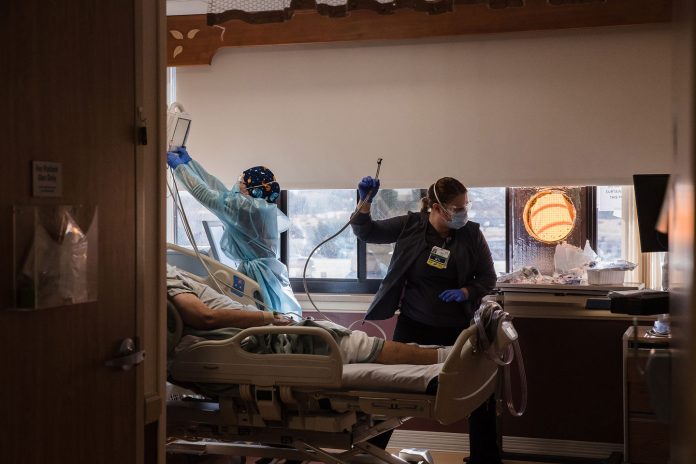
If you’ve been following the news on the coronavirus in California this week, you may have noticed a stark contrast in how the pandemic is playing out across the state.
While hospitals in Central and Northern California called in National Guard troops to help staff COVID-19 wards, officials in Los Angeles and the Bay Area began publicly discussing lifting mask mandates as transmission in their regions plummeted.
Sure, this disparity reflects the vastness of our state, but there’s another takeaway here: a widening gulf in how different parts of California are handling the pandemic.
For the first year that we lived with the coronavirus, many decisions about whom we interacted with and what precautions we took were handed down from the state. (Remember stay-at-home orders?)
But as control has increasingly shifted to the local level, there’s far less uniformity in the restrictions we face and in our behaviors — and therefore in our experiences of the pandemic.
Take vaccinations. Seventy percent of Californians eligible for the vaccines have received both doses, and there are statewide requirements for teachers, health care workers and state employees.
Yet there is huge variation across counties. In Marin County, 87% of Californians ages 12 and older have had both their shots. In Lassen County, 35% have.
To put this in context, the nation’s least vaccinated state is West Virginia, where 47% of residents who are 12 and older have had both their shots. Lassen and a handful of other California counties have lower vaccination rates.
This has major consequences: Unvaccinated Californians are eight times more likely to contract the coronavirus and 16 times more likely to die from it than those who got their shots, state data shows.
Much like the states with low coverage levels, the parts of California with low vaccination rates are also those that have experienced the worst of this summer’s delta surge.
There’s also evidence that people who aren’t vaccinated are less likely to take other precautions, such as wearing masks and staying away from crowded indoor spaces.
As Kevin Malotte, professor emeritus of epidemiology at Long Beach State, explained to me, “They have low vaccination rates because they don’t believe it’s that serious, so they’re not doing other mitigation measures either.”
But the trend doesn’t stop there. In recent months, highly vaccinated counties in California have also been quicker to insist on masks, testing in schools and vaccines for students and government employees.
On Wednesday, the city of Los Angeles voted to require proof of vaccination to enter indoor restaurants, gyms, museums, movie theaters and salons starting next month. The measure is one of the strictest in the nation.
With these rules, it joins San Francisco, Berkeley and Contra Costa County — places that also already have high levels of vaccination.
This article originally appeared in The New York Times.
Copyright 2021 The New York Times Company














